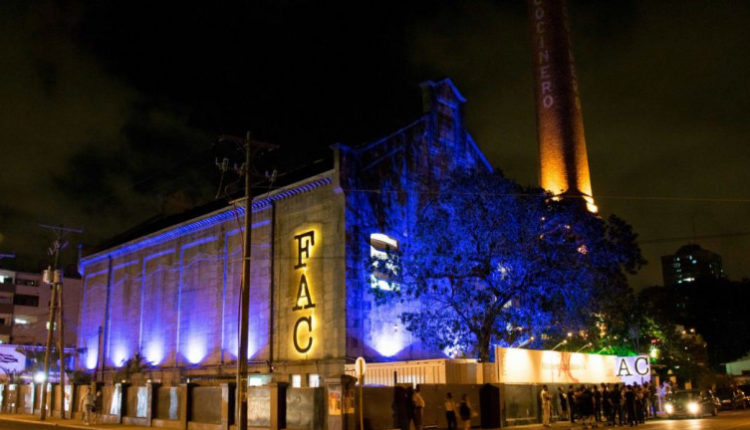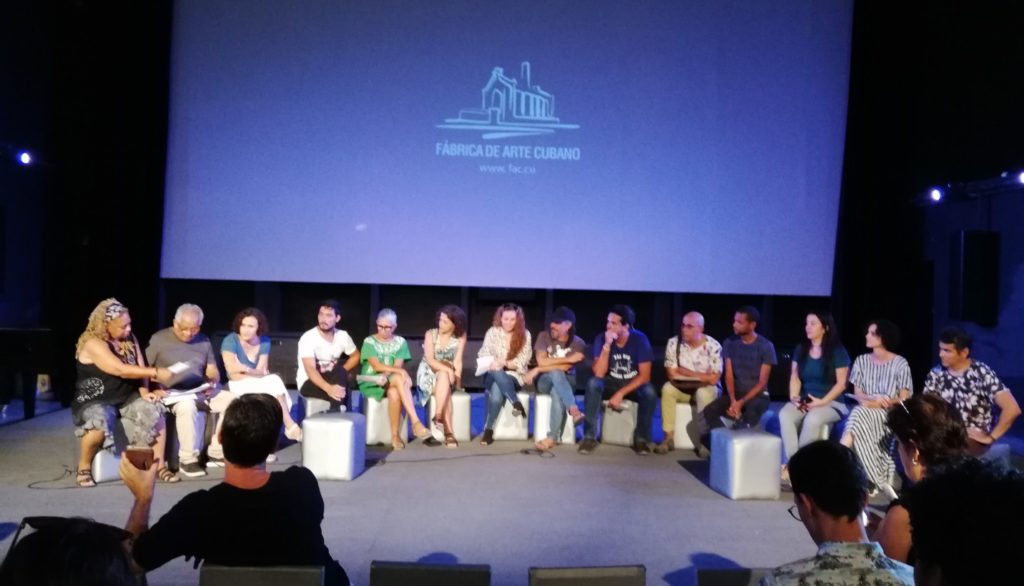
A new season at la Fabrica de Arte Cubano
HAVANA – La Fabrica de Arte Cubano (FAC), a cultural center where the best Cuban musicians and the most illustrious international musicians have visited and where more than 3,000 artists use their spaces yearly, reopened its doors again after its customary summer recess and it will soon celebrate its five year anniversary. The team in charge of FAC’s cultural management announced its upcoming programming, which will help celebrate the anniversary.
But FAC was busy during the summer. It held 27 free workshops on different artistic expressions where 610 children participated. Ongoing workshops include those for choir, Cuban dance and the spontaneous therapeutic theater for children with Asperger’s Syndrome, coordinated by FAC every first Saturday of each month and headed by Dr. Aleida Meneses.
The cultural project
Contrary to what one might think, FAC does not receive any type of financing from Cuba or foreign entities in order to function. According to FAC leaders “everything that exists was built little by little and gradually with the personal effort of X Alfonso and all the artists that make up this project.”
It is a sui generis space, which has no equal anywhere else inside or outside the country. The project has demonstrated that economic and cultural management can coexist in harmony resulting in a self-sustaining formula.
While the old oil factory building where the project exists belongs to Cuba’s Ministry of Culture – specifically under the umbrella of the National Center for Popular Music, of the Cuban Institute of Music – FAC’s brand and concept are internationally accredited to X Alfonso, who is curator and artistic director, together with the leaders of each event. The services within the facility (bars, restaurants, shops, etc.) are then managed by artisans or self-employed workers who pay the rent for the space to the National Center for Popular Music.
According to the description in the document distributed by the FAC leaders, these self-employed persons also donate “voluntarily part of their profit to the maintenance and purchase of equipment” for the project.
Donation is a keyword, by the way. The “improvement of the mechanisms and sources for the allocation of financing directly to cultural projects without commercial ends,” is an agreement with the Ministry of Culture published in August 2016 in the Extraordinary Official Gazette – No. 22, that approves entities and foreign persons residing in national territory (embassies, companies, etc.), as well as non-state forms of management, as a source of financing, provided that the money is received through the corresponding state entities.
FAC is defined as an artistic project with a marked “social and community” focus. You can find evidence of their work with the children in the community who have been impacted, and the children with disabilities and in their social networks who are served. However, all this has a monetary cost. As many who run businesses know well.

Cultural management models and the other projects that exist in Cuba
A series of new restrictions that will be imposed on cultural entities could limit the sustainability of these projects that have been born in recent years. And possibly FAC may not the best example given its exceptionality in the Cuban cultural scene. But still…
Specifically, the issue of hiring non professional artists – as there are many in Cuba, driven only by their natural talent – and the forms of payment; the distribution of contents that may be considered obscene, vulgar or disrespectful to the country’s patriotic symbols by culture officials whose task it is to be vigil of such things and whose power is granted to them by Decree 349 of the Council of Ministers; or simply the limitations to the self-employed in general that contains the package of measures published on July 10; by these decrees they would be narrowing the margins for the successful growth of many cultural projects in the country that do not have the possibility of assuming other management models, more in accordance, perhaps, with the characteristics they are looking for.
“With a highly institutionalized and centralized system of distribution and cultural consumption, for many years the Cuban artist has found little room for individual and collective entrepreneurship,” wrote lawyer and cultural manager Darsi Fernández in an article published by the magazine Temas during the first semester of 2016.
She adds that “Every year, new artistic and cultural projects, new leadership and business models appear in Cuba, without in most cases finding a natural channel through the legal and economic structures that exist for the sector.”
Among the different forms of legal entities that could legalize these projects are cooperatives as a management model. And yet there is not a case of a cultural cooperative approved for an artistic creation project despite the fact that the experiment has been in force for almost eight years (since December 11, 2012).
The deputy minister of culture, Fernando Rojas, in 2013 opined that “one of the great achievements of our sector in the last 20 years is to have managed to ensure that the currency expenditures needed by the system of culture are managed and collected endogenously.” That statement was made in regards to the subject of cooperatives in the cultural sector because “if that formula has been of benefit to the cultural system, putting another one in competition with it can damage its values.”
Other models for cultural management, in addition to cooperatives – where even the State could participate as a partner – might help expand the Cuban cultural scene by making its finances and costs more transparent. The problem though is that charging the State with large currency outlays that it does not always have — as shown by our current panorama — would be difficult to maintain.
FAC
Despite the incongruities faced from the legislative and cultural policy point of view for the sustainability of projects such as FAC, it has worked well for five years achieving notable milestones during this time.
And next season FAC has surprises lined up like a series of contests, which will allow Cuban contestants living in other countries to participate. There’s also an artistic residency between Havana and Recife, Brazil, with artists from the Cuban capital and the Brazilian city of Pernambuco involved.
In addition, planned for this month is the Capsuled Cuban Contemporary Dance Platform FAC 2018, a kind of exhibit of some of the most recognized companies and choreographers in Cuban dance for dance circuit programmers and festivals in Europe. In the musical field, FAC will present Pancho Céspedes, Sctockholm Chamber Choir (Sweden), Trio Amigos Kurosawa (Japan) and Dj Lefto (Belgium).
Other artists will be added and offered to the public. Finally, for more information (in Spanish), we provide you (by clicking here) with the complete lineup posted by FAC organizers for the coming season.


